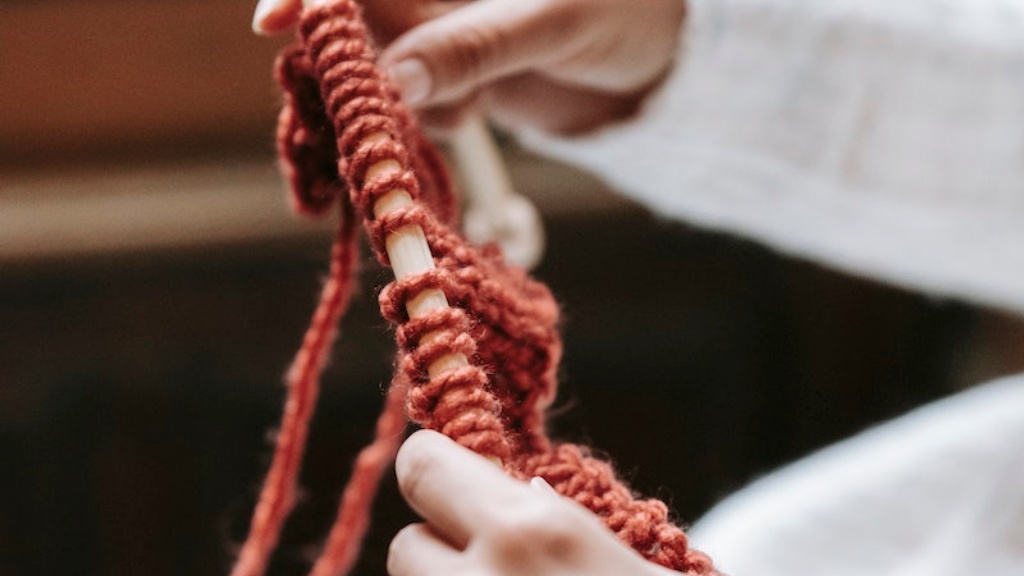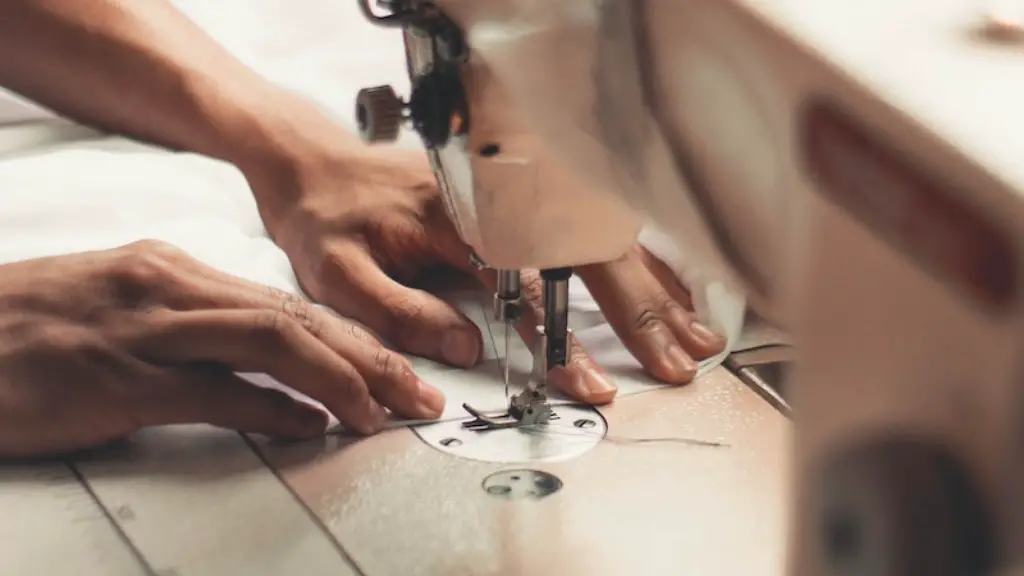Have you ever felt the need to give your favorite pair of jeans a minor makeover? Whether they’ve gotten too long, or you simply need to narrow the legs a bit, you can give them a custom fit with a sewing machine. Learning how to hem jeans with a sewing machine is relatively easy, with some practice, and the results will look professional and last for years.
Preparation and Materials Needed
To hem a pair of jeans, you’ll need scissors, a measuring tape, pins, and of course, a sewing machine. You’ll need to know how to adjust the stitch length and width before you get started and make sure the needle is suitable. The presser foot should be suitable for sewing denim, which will require a heavier duty needle and a teflon-coated presser foot.
Once all your materials have been gathered up, you can start by measuring the jeans to determine how much extra material needs to be cut off. Measure from the end of the jeans to the bottom of the heel while they are being worn. Mark this line at the front and back, then add an extra two centimeters to give yourself a wider seam allowance.
Once the measurements are complete, it’s time to start cutting. Start by laying the jeans on a flat surface, then cut away the excess fabric. Start at the side seams, making sure to leave two centimeters for the hem seam allowance. If the jeans are flared, make sure to angle the cut as you go, so that the hems will be even.
Sewing the Hems
Once the excess fabric has been removed, it’s time to start the sewing process. First, the bottom of the jeans should be folded over and pinned. Then, the needle should be placed in the down position and the sewing machine should be set to the correct stitch length. The recommended stitch length for denim is three millimeters.
Next, begin sewing the hemline. Start at one side seam and work your way around the entire hemline. Make sure to keep the needle in the down position as you go. Sew slowly and leave a tail at the end of the seam to hold the thread in place. Once the hemline is complete, the thread tails should be snipped off.
At the end of the process, you’ll have a perfectly hemmed pair of jeans! The whole process should take about an hour and the result will be a pair of jeans that fit perfectly and look professionally hemmed.
Ironing and Finishing Up
Once the hem has been sewn in place, the jeans should be pressed with an iron. This will help flatten any wrinkles and give the hem a professional look. To finish off the hem, a zig-zag stitch or a wide overlock stitch should be used along the sides of the hem. This will help secure the hem and prevent any fraying.
Finally, put the jeans back on and check that the hem is not too tight or too loose. If necessary, make any minor adjustments to ensure a perfect fit. Once you’re satisfied, it’s time to enjoy your newly hemmed jeans!
Best Fabrics for Hemming
When it comes to hemming jeans, the best fabrics are heavyweight denims. These fabrics are strong and durable, and will hold up to the rigors of repeated use. Other fabrics that can be hemmed with a sewing machine include cotton blends, wool, and light-weight twills.
When hemming these fabrics, it’s important to use the correct needle and presser foot for the fabric. For example, a thinner fabric may require a universal needle and a walking foot presser foot. On the other hand, a heavyweight fabric like denim will require a heavier duty needle and a teflon-coated presser foot.
It is also important to choose the correct stitch length. For lightweight fabrics, a longer stitch length should be used, while a shorter stitch length should be used for heavier fabrics. This will help ensure a strong and secure stitch that can withstand wear and tear.
Adjusting the Stitch Length
If the stitches are too wide or too long, the hem will not turn out correctly. To adjust the stitch length, look for a dial or lever on the sewing machine. This can usually be found near the footplate or the needle area.
If it’s a manual machine, the dial or lever should be adjusted manually. For electronic machines, the stitch length can be adjusted by selecting the desired setting from a menu.
If the stitch length is too long, the fabric will not stay secured and the hem will loosen. If the stitch length is too short, the fabric will not be able to move and will break easily. So, it’s important to adjust the stitch length to the correct setting.
Common Problems and Solutions
When hemming jeans with a sewing machine, it’s important to pay attention to potential problems. Common problems include skipped stitches, fabric puckering, and thread bunching. These can be caused by an incorrect needle size, incorrect presser foot, or incorrect stitch length.
If these problems occur, the first step is to check the needle size and presser foot. If these are correct, the next step is to adjust the stitch length. If the stitch length is still incorrect, the problem could be due to a faulty machine or thread. In this case, it’s best to consult a professional or buy a new machine.
Taking Care of Your Jeans
To ensure that your hemmed jeans last for years, it’s important to take good care of them. Before wearing them, make sure to wash and dry them using a gentle cycle. This will ensure that the fabric and hems stay strong and secure.
When wearing your jeans, take extra care not to pull or tug on the hemline. This can cause the stitching to come undone and create unsightly puckers and pulls. Additionally, be sure to avoid washing your jeans too often, as this can damage the fabric and stitching.
Alternatives to Sewing Machines
If you don’t have access to a sewing machine, there are other ways to hem your jeans. Hand-stitching is one option, although it can be time consuming and difficult to do. Additionally, you can use fabric glue or iron-on hem tape to secure the fabric. These can help provide a temporary fix, but the results may not be as strong and secure as with a sewing machine.
Advantages of Hemming with a Sewing Machine
The main advantage of using a sewing machine to hem your jeans is that it results in a professional-looking, long-lasting hemline. With practice, it can become quite easy to hem jeans with a sewing machine. The results will be of much higher quality than a hand-stitched hem, or one secured with fabric glue or iron-on hem tape.
Learning to hem jeans with a sewing machine is also a great way to get familiar with the sewing machine and develop basic sewing skills. Once you’ve mastered hemming, you’ll be able to take on more complex projects, such as garment alterations and repairs.
Summary
Hemming jeans with a sewing machine is a great way to give your favorite pair of jeans a custom fit. All you need is a sewing machine, scissors, measuring tape, and pins. Start by measuring the jeans to determine the amount of extra material to be removed, then cut away the excess fabric. Finally, start sewing the hemline and finish up with an iron and a zig-zag stitch or a wide overlock stitch along the sides. With some practice, you’ll be able to tackle any jeasnhemming projects with ease.





